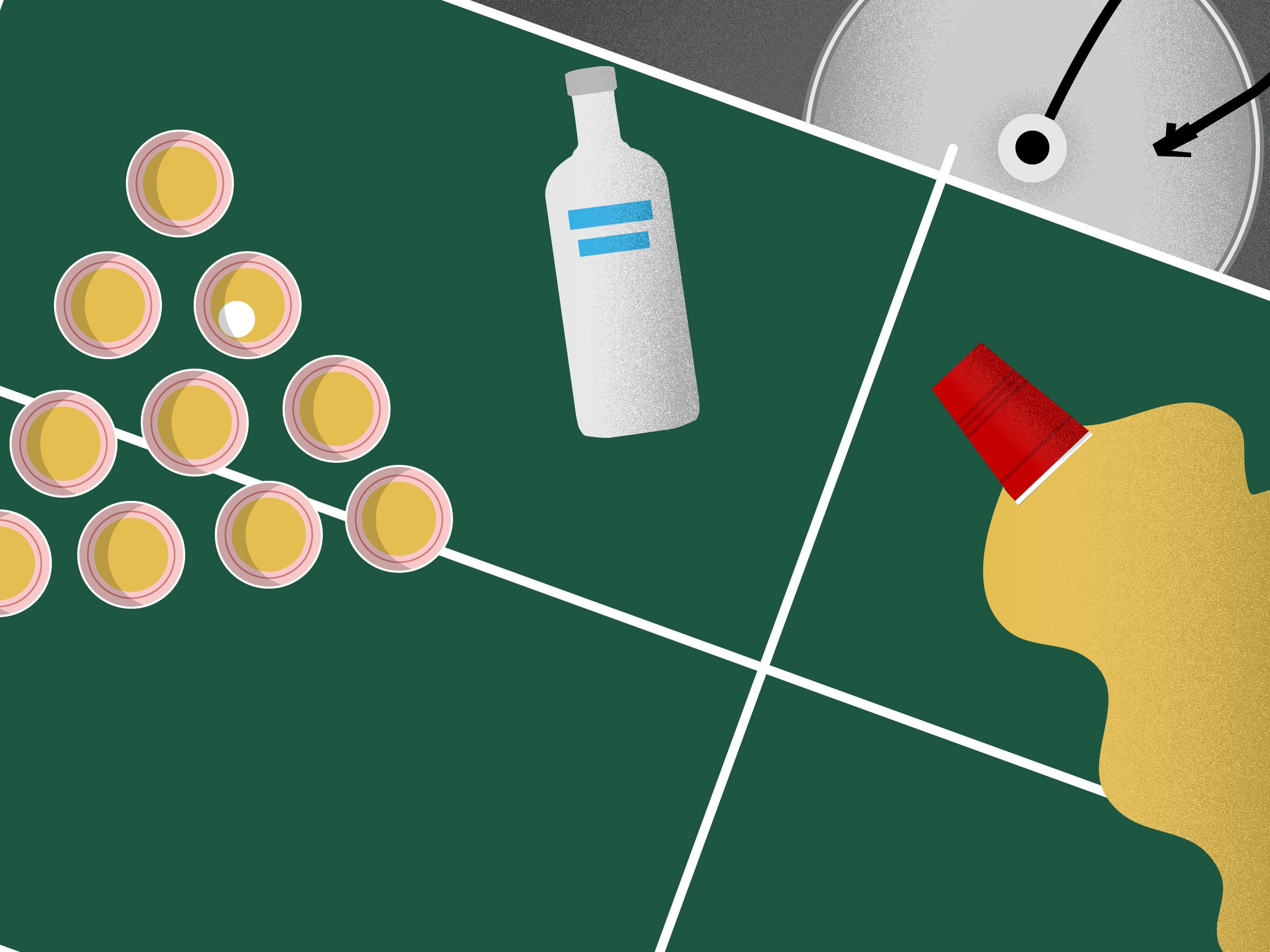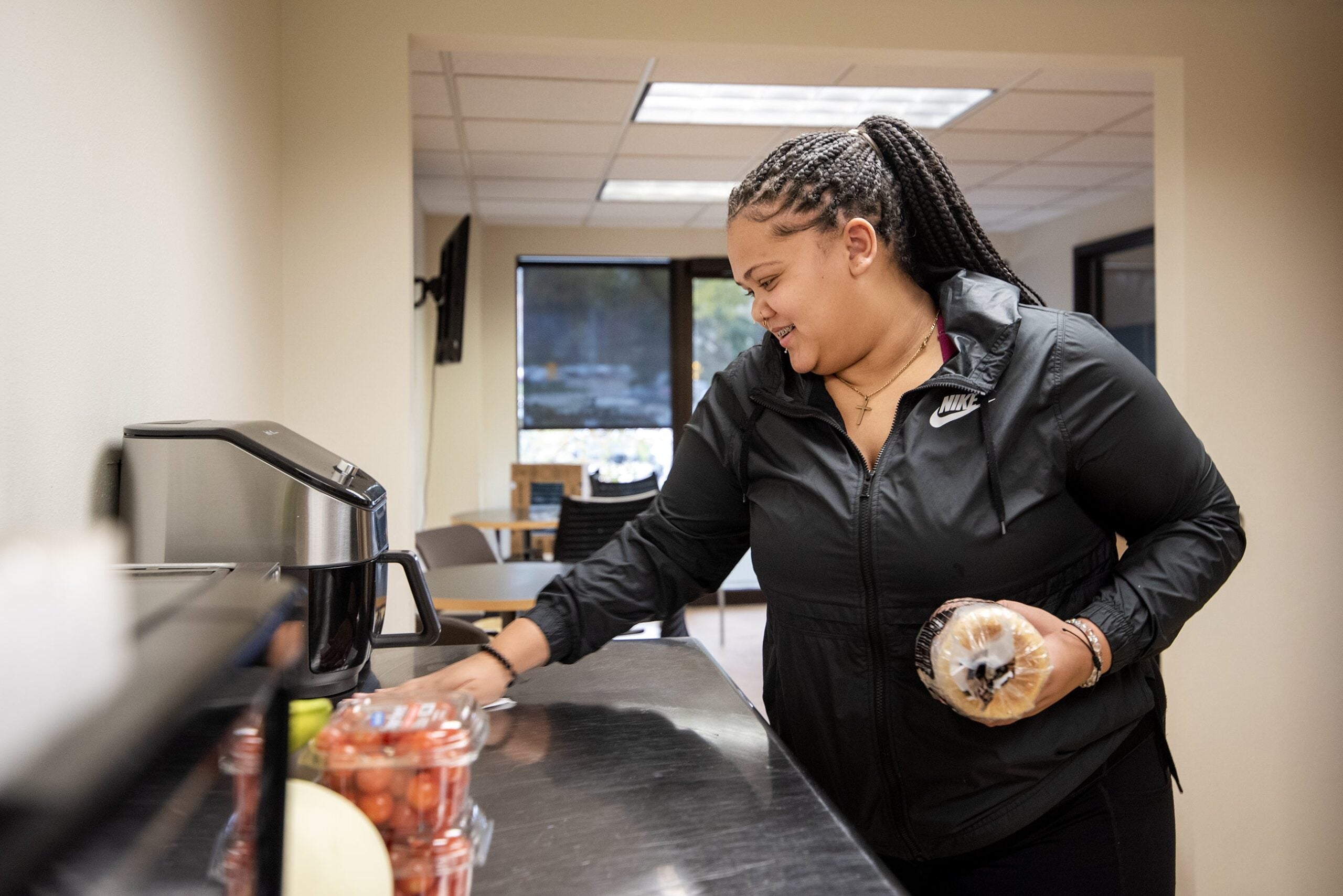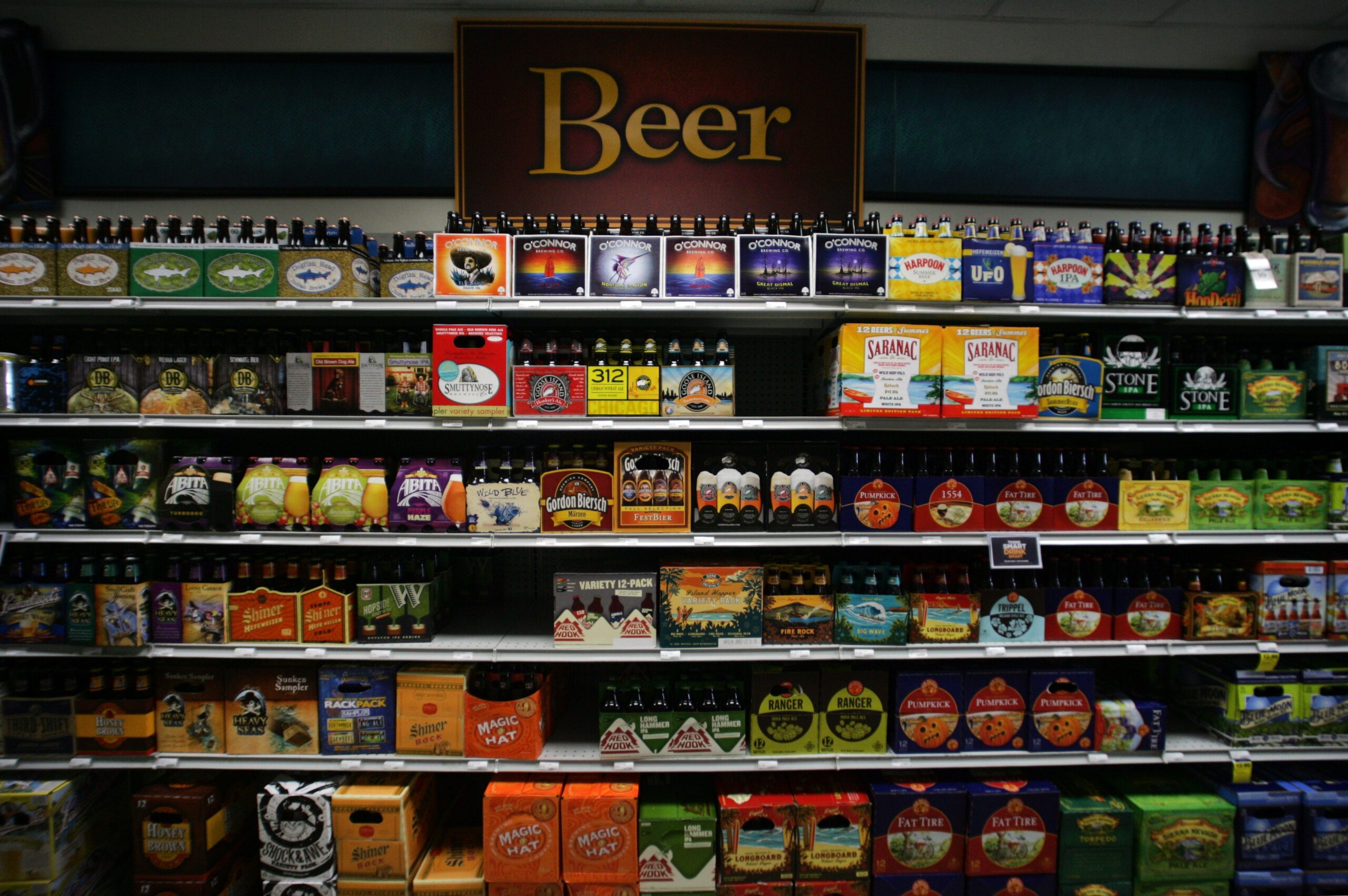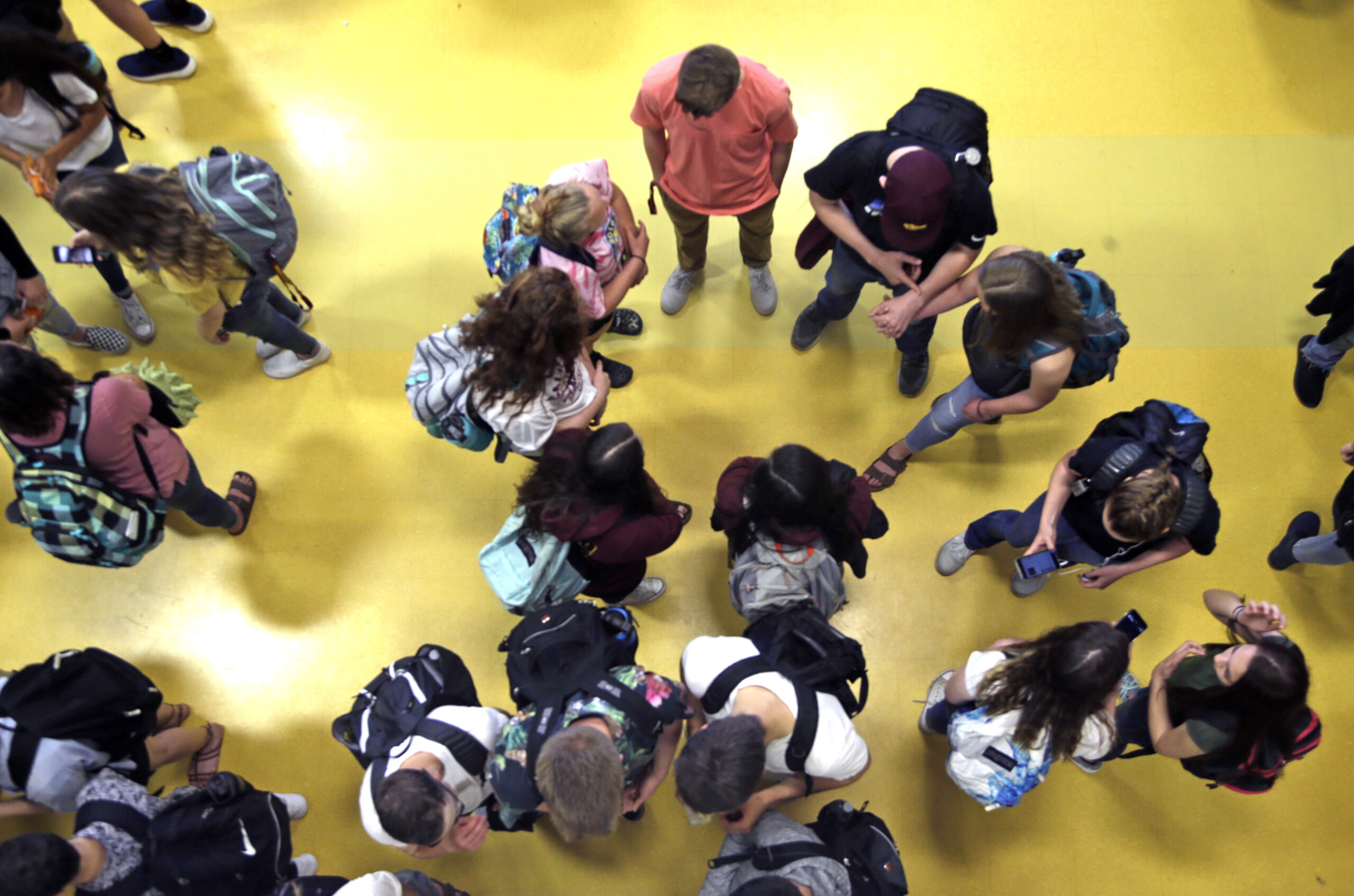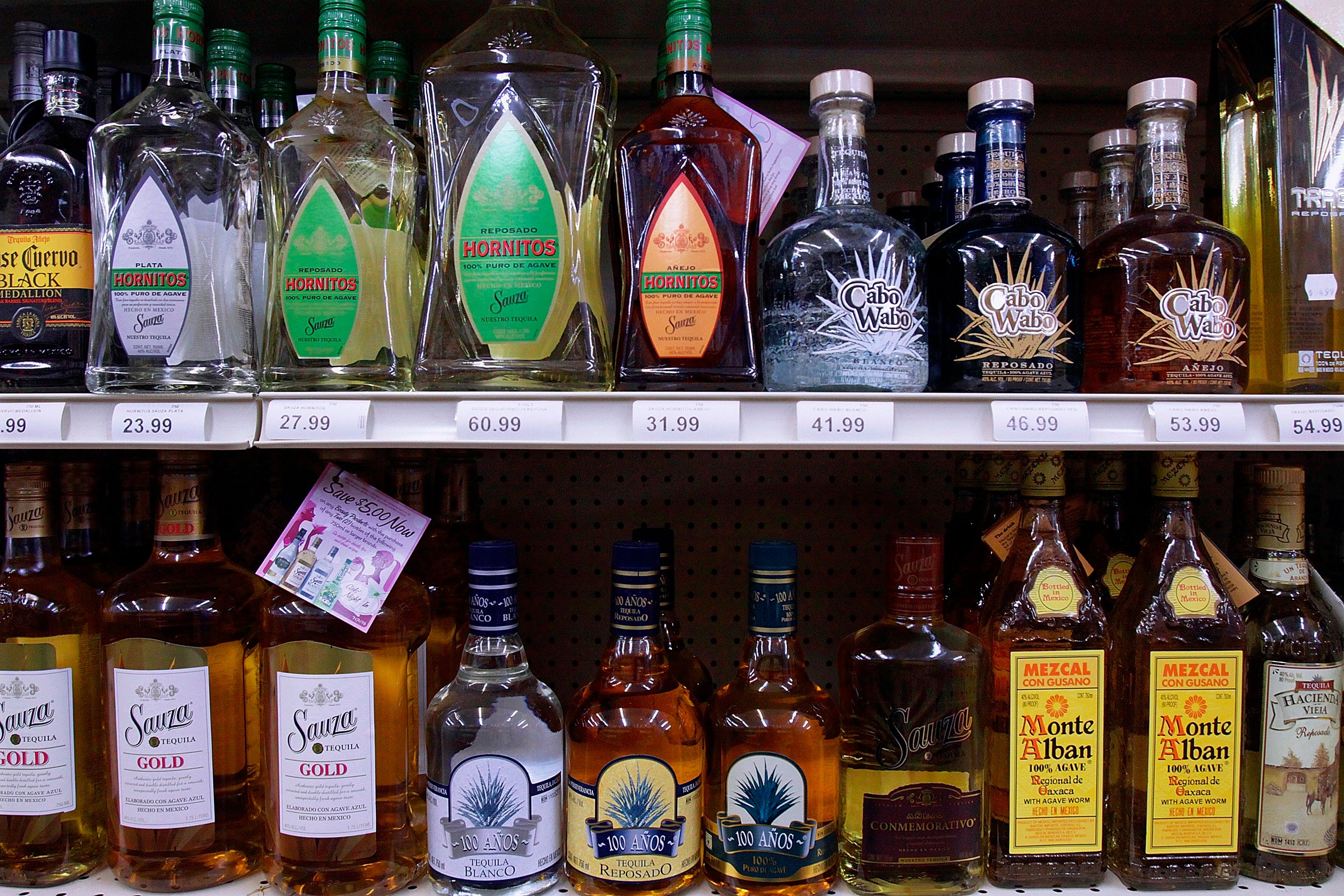Ivonne was at a family party at a house near Wausau and all of her cousins were drinking. She eyed a box of Mike’s Hard Lemonade before pulling out a bottle.
“Oh, you’re cool,” her cousins bantered.
She didn’t like the taste. She drank the whole bottle anyway.
Stay informed on the latest news
Sign up for WPR’s email newsletter.
There’s nothing wrong with drinking alcohol if it’s done responsibly, said Colby, another Wisconsin student who points out that she’s German and drinking is part of her heritage. Wisconsin Public Radio is only using students’ first names to protect their privacy.
Joseph, from a rural area near Wausau, didn’t think back to what he learned in his eighth grade health class about alcohol — what it does to the body — when a friend handed him a Busch Light from a cooler.
“It was in the moment, and everyone else was drinking and staying the night,” he said. “All of them drink often, so I said, ‘Why not this one time?’”
Wisconsin is ahead of the pack when it comes to excessive drinking, and that identity filters down to younger generations.
“Kids don’t live in a parallel universe,” said Julia Sherman, coordinator of the Wisconsin Alcohol Policy Project, a resource providing tools and training to municipalities and groups to reduce alcohol-related problems.
“Alcohol is very available to young people,” Sherman said. “In fact, if you think about it, the easiest place to get a beer in Wisconsin is probably right next to the milk in the fridge.”
“If you think about it, the easiest place to get a beer in Wisconsin is probably right next to the milk in the fridge.”
Julia Sherman of the Wisconsin Alcohol Policy Project
A Cultural Shift?
Overall, the rate of underage drinking in high school is trending down.
Yet while Wisconsin’s rate of underage drinking has dropped significantly, about 65 percent of Wisconsin high school students reported having at least one drink ever on the Centers for Disease Control and Prevention’s 2017 Youth Risk Behavior Survey.
That’s above the national average of 60 percent.
“Think of it as a report card with a bunch of C minuses on it,” Sherman said.
The number of Wisconsin high schoolers who have at least tried alcohol fell by just 1 percentage point between the 2013 and 2017 reports; whereas the national rate dropped by 6 percent.
For Madison, a Wisconsin high school student, being asked to drink is a fairly common occurrence with her peers. For the most part, those who offer drinks usually accept her excuses that she has other things to do.
She’s worried it will affect her participation in clubs and sports.
“I feel like in Wisconsin culture, it’s so normal to drink, so everyone is tempted by it because there’s always someone that we know that speaks so highly of it,” she said.
Again, Wisconsin Public Radio is omitting the high school students’ last names, ages and schools they attend to protect the identities of those who may have engaged in illicit activity.
“I feel like in Wisconsin culture, it’s so normal to drink, so everyone is tempted by it because there’s always someone that we know that speaks so highly of it.”
Madison, a Wisconsin student
Underage drinking peaked in the late 1990s to the early 2000s, Sherman said.
In response, the federal government stepped in and provided funding to states to enforce the legal drinking age. In Wisconsin, a significant portion of those funds went toward alcohol age-compliance checks.
Many Wisconsin communities also looked to close loopholes in Wisconsin’s alcohol laws, Sherman said. Wisconsin is fairly unusual in that it handles alcohol control at the municipal level.
In 2009, municipalities began adopting ordinances that made it illegal, but not a crime, to provide a location for underage drinking. Those ordinances were struck down by the District II Court of Appeals in 2016. The following year, the state signed into law the Social Host bill, which fines adults $500 for a first offense for providing a location for underage drinking.
Communities also began providing refrigerator locks for unattended or unsecured refrigerators — like those in garages — because research shows a youth’s first drink is often pilfered from home, and can start as early as middle school.
By high school, teens that get alcohol are more often than not taking it from home or soliciting siblings and friends of legal drinking age to purchase it for them — it’s typically not until the late teen years that they try and buy it themselves, Sherman said.
“We’re doing better,” Sherman said. “But we’ve still got a long way to go in this state because now we know the consequences are even more dire than we knew and they can be life changing, as well as life threatening.”
Efforts Mobilize
Deborah Tackmann, a health and physical education teacher at Fall Creek’s middle and high schools in west-central Wisconsin, credits some of the state’s declining underage drinking rates to the way teachers and communities responded to the challenge of an intoxicated society.
Students might have been taught to say “no” to alcohol, but they weren’t taught how to say “no,” she said. Now, Tackmann — who has been a teacher for about 40 years — is teaching skills such as decision-making, goal-setting, advocacy and ways of validating information, among other techniques.
“That is far more than I taught before, (which was) ‘This is your brain, this is your brain on drugs,’” she said.
Peer-to-peer programs are especially effective, said Julianna Manske, a public health nurse for Volition Franklin — a community coalition near Milwaukee that plans prevention activities and aims to help youth make healthy choices.
Students are introduced to health curriculum with alcohol as a subject in eighth grade, while older students are trained to speak with younger students about the effects of alcohol.
“I think it’s eye-opening, and they see peer leaders who don’t do it,” Manske said.
Community-wide efforts have ramped up over the years and prevention organizations continue to mobilize in schools and communities around the state.
For example, La Crosse County Prevention Network has a goal to reduce how many youths drank in the past month from 19 to 17 percent by September 2020.
The REACH program (Reducing Excessive Alcohol Consumption for Health) in Calumet County was recently awarded a Drug-Free Communities grant to tackle prescription drug use and alcohol misuse in the county.
Hannah Wilz, youth and communications coordinator for REACH, said those areas were chosen based on data from the county’s youth-risk behavior survey, focus groups and the reality that Calumet County is consistently in the top five counties for worst binge-drinking in the state.
Wilz said some of the grant money was used to send four Chilton High School students to the Wisconsin Alliance for Youth Summit, which supports its members with substance abuse prevention efforts.
Bad Influences
The effects of drinking on teenagers and young adults are widespread. Youth who drink face more school, social and legal problems. Drinking also causes a disruption of hormones that can impact growth, raise the risk for suicide, memory problems and more, according to the Centers for Disease Control and Prevention.
For youth who begin drinking at 14 or earlier, 47 percent experience alcohol dependence at some point in their life compared to 9 percent for those who start drinking at 21 or older, according to the National Institute on Alcohol Abuse Alcoholism (NIAAA).
The NIAAA also reports that more than 1,800 college-aged students die each year from alcohol-related injuries and nearly 700,000 students are assaulted by another student who has been drinking.
Data by gender doesn’t bode well for young women, for whom underage binge drinking — defined by women having more than four drinks in a short period of time — has been trending up in the past decade.
The same is true for casual drinking. While young men are participating less, young women are pulling ahead.
Sixty-seven percent of female high school students in Wisconsin have had an alcoholic drink compared to 62 percent of their male peers, according to the 2017 CDC youth risk survey.
In 2013, 65 percent of female high school students in Wisconsin reported they had had an alcoholic drink, as did 67 percent of their male peers.
“That’s a glass ceiling I’m not really happy to see break,” Sherman said. “Not only do they have a lot of the same acute harms and long-term health consequences as young men do, but they also raise their risk of breast cancer in the long run, and they raise their risk of unplanned sexual contact and sexual assault.”
Sherman said young women see more alcohol advertisements than young men, and teenagers such as Ivonne are noticing it.
“It’s cool or sexy if you drink,” Ivonne, who drank with her cousins, said of the messages she gets from advertisements.
Sherman concurred, saying sexualized, glamorized ads are streaming on shows such as “The Real Housewives” and “Keeping Up With The Kardashians.”
Self Reflections
From mini ping-pong games to mini shot glasses, drinking games and toys, advertising certainly aims young, said Manske, the public health nurse.
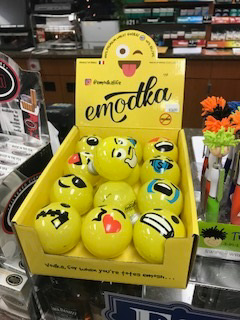
“There’s young people partying and having a good time on advertisements,” she said. “I think it’s linked to a younger audience, even when you walk down the aisles.”
A study from the Journal of Studies on Alcohol and Drugs looked at a nationwide sample of more than 1,000 people ages 13 to 20 and found the amount of alcohol they drank in the past month increased along with the number of alcohol advertisements they saw.
Despite the prevalent messages in media, research shows it’s parents who have the single greatest influence on youth when it comes to underage drinking.
Some counties are trying to capitalize on that. For example, Calumet, Marathon, Outagamie and Winnebago counties have developed the Real Happy Hour program, which encourages family-togetherness and positive influences.
In Calumet County, the students who attended the youth summit took what they learned and designed a billboard to spread a message to parents that addresses the influence they have on their children.
“We wanted a slogan that not only got our message across, but also gave a positive message by thanking parents and adults who aren’t providing alcohol to minors,” said Wilz of REACH.

High schooler Madison said she is raised in a home where there was rarely alcohol, and her mom doesn’t drink.
“The concept of drinking alcohol was never really a thought that crossed my mind until high school,” she said, noting that both learning about it in health classes and hearing about experiences from other students made her more conscious of it.
But Sherman cautions the onus isn’t just on parents.
“We all create the alcohol culture,” Sherman said. “It didn’t fall on us like an asteroid.”
Changing Habits
Manske, like others, chooses to tackle the larger, generalized appetite for alcohol one step at a time.
While planning her son’s first birthday party, she was met with a conundrum.
Beer, of course, should be served for the adults, her husband said. But the party was in the early afternoon. And for a 1-year-old.
She wondered: Did beer really need to be on the menu?
“It was a big internal struggle for me,” she said.
Manske couldn’t fault her husband. He didn’t have the background that she does as a public health nurse. She believes that for Wisconsinites’ opinions about alcohol to change, each person needs to make conscious decisions about his or her relationship with alcohol.
Manske didn’t openly serve the alcohol. But it was there, in the fridge, in case anyone specifically asked for it. Manske said one of the ways to change perceptions is to offer alternatives to alcohol when offering beverages. Water, orange juice, milk, lemonade.
“Always offer that alternative,” she said.
Tackmann takes another route and reminds her students they only have one life.
“What do you want it to look like?” she asks them.
Sherman would like to see students learning about the effects of alcohol sooner than they are.
“If you wait until your child gets their driver’s license to talk to them about alcohol and drugs, you’re probably five or six years too late,” Sherman said, noting that recent recommendations call for drug and alcohol education to begin in third, forth and fifth grades.
As far as the state’s legislation goes, it’s up to the parents.
Wisconsin is one of a few states that allows underage youth to be sold alcohol in licensed establishments if they are with their parents, guardians or spouses of legal drinking age — however, it’s up to the establishment whether or not to permit it.
But even if children are just sipping a drink— once considered a way to teach teens about drinking — they’re actually more likely to drink later on.
And research shows that the younger a person is when they begin drinking alcohol, the greater the likelihood they will move into illegal drugs.
“If you want to prevent the next opiate crisis, we need to keep up the pressure on underage drinking because that is in fact the gateway drug,” Sherman said. “Every year you delay alcohol initiation we reduce the chance that they are going to have an illicit drug dependent addiction … later in life.”
